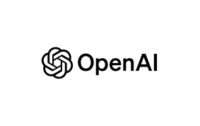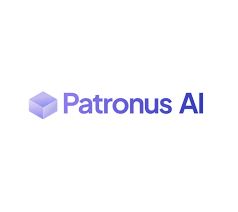Artificial intelligence (AI) is being applied across a wide array of datasets with varying degrees of success, and the medical field is no exception. However, a new startup, Piramidal, is confident that it has developed a breakthrough in the application of AI to electroencephalography (EEG) technology, which could revolutionize the way brainwave data is analyzed and interpreted.
EEG technology, which records electrical activity in the brain, is a critical tool in hospitals around the world. It is used to monitor patients with brain disorders, such as epilepsy or stroke, and to track brain activity in critical care units. Despite its widespread use, EEG technology is fragmented across different types of machines, each with its own unique setup. This fragmentation poses a significant challenge, as it requires specialized knowledge to interpret the data accurately. Nurses and doctors often need to rely on their training and experience to recognize dangerous patterns in the brainwaves, a task that becomes even more challenging under acute conditions in an ICU setting.
Piramidal’s cofounders, Dimitris Sakellariou and Kris Pahuja, have observed these challenges firsthand. They noted that while EEG is an invaluable tool, its effectiveness is limited by the complexity and inconsistency of the data it produces. This inconsistency can lead to delays in diagnosis and treatment, which can be critical in acute medical situations.
The Vision: A Foundational AI Model for EEG Analysis
Sakellariou and Pahuja founded Piramidal with the vision of creating a foundational AI model that can standardize and automate the analysis of EEG data. This model would be capable of flagging worrisome brainwave patterns in real-time, regardless of the type of EEG machine used or the specific conditions of the hospital setting. The goal is to improve patient outcomes by providing consistent and reliable data interpretation, thereby reducing the burden on medical professionals.
“In the neural ICU, there are nurses actually monitoring the patient and looking for signs on the EEG. But sometimes they have to leave the room, and these are acute conditions,” Pahuja explained. An abnormal reading or alarm could indicate an epileptic episode, stroke, or another serious condition, yet interpreting these readings accurately requires a level of expertise that not all staff may possess.
Building the Foundation: From Research to Reality
The founders’ journey began with years of research into the feasibility of computational tools in neurology. They discovered that while it is possible to automate the analysis of EEG data, the technology has not been widely adopted due to the complexity of implementation. Each time an EEG device is used, the system needs to be rebuilt from scratch, with new data collected and annotated by humans.
This process is further complicated by the fact that EEG systems vary widely in their basic elements, such as the number of electrodes and their placement on the scalp. These variations make it difficult to develop a one-size-fits-all solution. However, Piramidal’s founders believe that they have developed a foundational model that can overcome these challenges.
Sakellariou shared his extensive experience working alongside neurologists in operating rooms to understand the utility of brainwave data and how computational systems could be designed to identify critical patterns. “Every time you use an EEG device, you have to rebuild the whole system for that specific problem,” he said. “You need to get new data, you need to have humans annotate the data from scratch.”
The Promise of Piramidal’s Model
Piramidal’s foundational model for EEG readings is designed to function out-of-the-box, without the need for months of studies or reconfigurations. The company compares their approach to Meta’s Llama series of models, which provide a foundational capability that can be adapted for various applications. For Piramidal, the “language” of their model is brain activity, as recorded by EEGs. The model is intended to be adaptable to any setup, regardless of the number of electrodes, the model of the machine, or the specific patient.
While the model is not yet publicly available, the founders have made it clear that they have already built and tested it. “We have built the foundational model, we have run our experiments on it, and now we are in the process of productionizing the code base so it is ready to be scaled to billions of parameters,” Pahuja said.
Piramidal plans to deploy the first production version of its model in hospitals early next year, with four pilot projects set to begin in Q1. These pilots will take place in intensive care units (ICUs) and will involve collaboration with the hospitals to co-develop the technology. The pilots are expected to provide valuable proof of concept, demonstrating that the model can function effectively in diverse medical settings.
While the model will need to be fine-tuned for certain applications, the founders are confident in its value as a foundational tool. “There’s no world where a model trained from scratch will do better than a pre-trained model like ours,” Sakellariou said. “It’s still the biggest EEG model that has ever existed, infinitely larger than anything else out there.”
Securing the Future: Funding and Data
To move forward, Piramidal needs both financial resources and data. The company has already secured a $6 million seed round, co-led by Adverb Ventures and Lionheart Ventures, with participation from Y Combinator and angel investors. This funding will be used to cover the significant compute costs associated with training large AI models, as well as to expand the team.
As for data, the company has enough to train its first production model, thanks to the availability of open-source EEG data, which they have been aggregating and harmonizing into a comprehensive data store. The partnerships with hospitals involved in the pilot projects are expected to provide additional valuable data, potentially thousands of hours’ worth, which could be used to further refine the model.
Piramidal’s founders envision a future where their model can detect brainwave patterns that are beyond the capability of the human eye to recognize. While this level of superhuman capability is still in development, the company is focused on the immediate goal of improving the quality of care in ICUs. The upcoming pilots will provide an opportunity to rigorously evaluate the model’s effectiveness, both in clinical settings and in the eyes of potential investors.
In conclusion, Piramidal’s foundational model for EEGs represents a significant advancement in the application of AI to brainwave analysis. By standardizing and automating the interpretation of EEG data, the company aims to enhance patient outcomes and reduce the burden on healthcare professionals. As the model moves from development to deployment, it could become a critical tool in the ongoing effort to integrate AI into medical practice, paving the way for more advanced and reliable healthcare solutions.
See also: Former OpenAI Employees Criticize Company’s Opposition To AI Safety Bill SB 1047

















